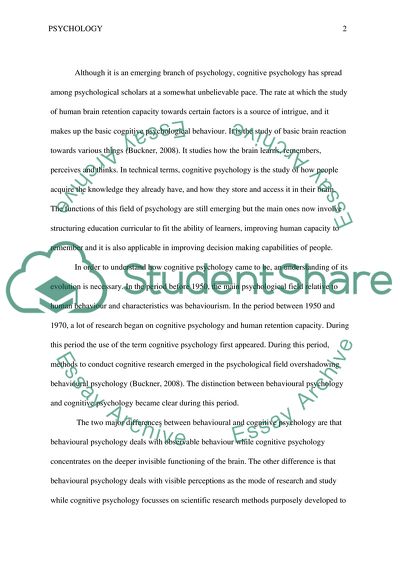Cite this document
(The Contribution of Neuroimaging to Understanding of Failures in Long Term Memory Coursework Example | Topics and Well Written Essays - 2500 words, n.d.)
The Contribution of Neuroimaging to Understanding of Failures in Long Term Memory Coursework Example | Topics and Well Written Essays - 2500 words. https://studentshare.org/psychology/1816884-critically-evaluate-the-contribution-that-neuroimaging-has-made-to-our-understanding-of-failures-in-long-term-memory
The Contribution of Neuroimaging to Understanding of Failures in Long Term Memory Coursework Example | Topics and Well Written Essays - 2500 words. https://studentshare.org/psychology/1816884-critically-evaluate-the-contribution-that-neuroimaging-has-made-to-our-understanding-of-failures-in-long-term-memory
(The Contribution of Neuroimaging to Understanding of Failures in Long Term Memory Coursework Example | Topics and Well Written Essays - 2500 Words)
The Contribution of Neuroimaging to Understanding of Failures in Long Term Memory Coursework Example | Topics and Well Written Essays - 2500 Words. https://studentshare.org/psychology/1816884-critically-evaluate-the-contribution-that-neuroimaging-has-made-to-our-understanding-of-failures-in-long-term-memory.
The Contribution of Neuroimaging to Understanding of Failures in Long Term Memory Coursework Example | Topics and Well Written Essays - 2500 Words. https://studentshare.org/psychology/1816884-critically-evaluate-the-contribution-that-neuroimaging-has-made-to-our-understanding-of-failures-in-long-term-memory.
“The Contribution of Neuroimaging to Understanding of Failures in Long Term Memory Coursework Example | Topics and Well Written Essays - 2500 Words”. https://studentshare.org/psychology/1816884-critically-evaluate-the-contribution-that-neuroimaging-has-made-to-our-understanding-of-failures-in-long-term-memory.


